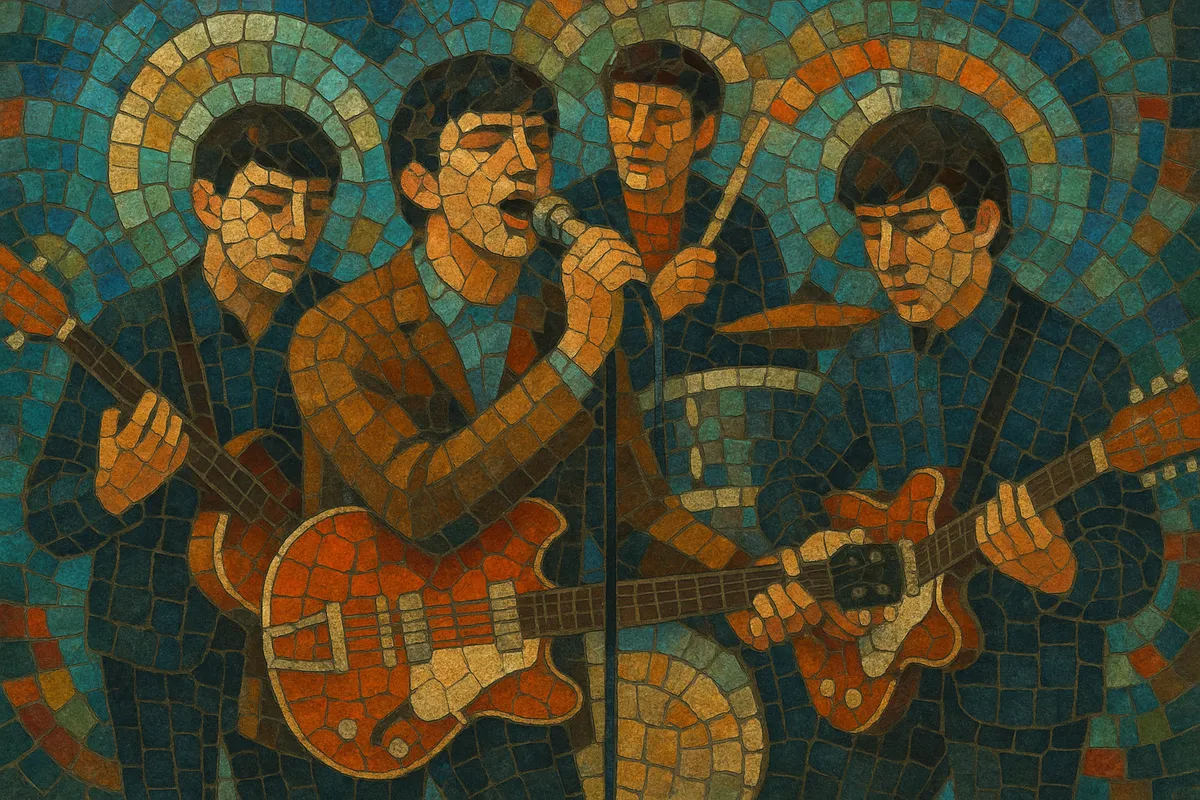Merseybeat is a British beat style that emerged in early-1960s Liverpool and the surrounding Merseyside area.
It blends the exuberance of American rock and roll and rhythm and blues with the skiffle-derived DIY energy that swept Britain in the late 1950s. Hallmarks include tight vocal harmonies, short and catchy verse–chorus forms, a strong backbeat in 4/4, melodic walking or bouncing bass lines, bright rhythm guitars (often with a jangly timbre), handclaps or tambourine accents, and lyrics focused on youthful romance and everyday optimism.
The sound is guitar-bass-drums–centric, hook-forward, and danceable, laying the foundation for the British Invasion and shaping subsequent pop and rock craft.
Merseybeat grew out of the UK skiffle craze and youth club/coffee-bar culture in Liverpool, where inexpensive guitars and makeshift bands encouraged a do‑it‑yourself ethos. Local musicians absorbed American rock and roll, rhythm and blues, doo‑wop harmonies, and rockabilly swagger, shaping a brisk, harmony-rich approach to upbeat guitar music.
By 1960–1962, Liverpool venues such as the Cavern Club nurtured a dense network of groups. Managers (notably Brian Epstein) and local promoters helped formalize a scene. The Beatles’ early singles in 1962–1963, alongside hits by Gerry and the Pacemakers and The Searchers, crystallized the Merseybeat sound for a national audience.
The style ignited the British Invasion, carrying Merseyside bands to US and international charts. Its crisp songwriting, vocal blend, and danceable backbeat influenced garage bands across America and informed the craft of pop rock and later power pop.
As the mid-1960s progressed, many groups shifted toward folk rock and psychedelic styles, while R&B-driven bands also rose. Merseybeat’s distinct profile waned, but its songwriting economy, harmony use, and jangly guitar textures lived on, directly informing jangle pop, power pop, Britpop sensibilities, and the broader vocabulary of melodic pop rock.
Use a classic guitar-band lineup: rhythm electric guitar (often a bright, slightly driven tone), lead electric guitar for fills and hook riffs, electric bass with melodic but steady lines, and a tight drum kit emphasizing a snappy 2-and-4 backbeat. Add tambourine and handclaps to reinforce choruses. Typical tempos sit around 120–160 BPM in 4/4, with straight eighths and an energetic, danceable feel.
Favor concise verse–chorus structures with a memorable hook and a contrasting bridge ("middle eight"). Chord progressions are diatonic and catchy: I–IV–V, I–vi–IV–V, or ii–V–I–vi are common. Employ two- or three-part vocal harmonies (lead plus close upper harmony), call-and-response lines, and unison shout hooks for emphasis.
Keep rhythm guitar percussive and jangly (downstrokes and tight strumming); use short lead fills between vocal phrases. Rickenbacker- or other bright single-coil tones fit well. Bass should outline roots with tuneful movement and occasional passing tones. Keep arrangements compact (2–3 minutes), with clear intros, crisp breaks, and a decisive ending.
Write lyrics around youthful romance, dancing, friendship, and everyday optimism. Use simple, vivid language and a direct first-person voice. Production should be punchy and dry-to-moderate in ambience—vocals forward, guitars present but not overly distorted, drums tight, and tambourine/claps audible in choruses.


